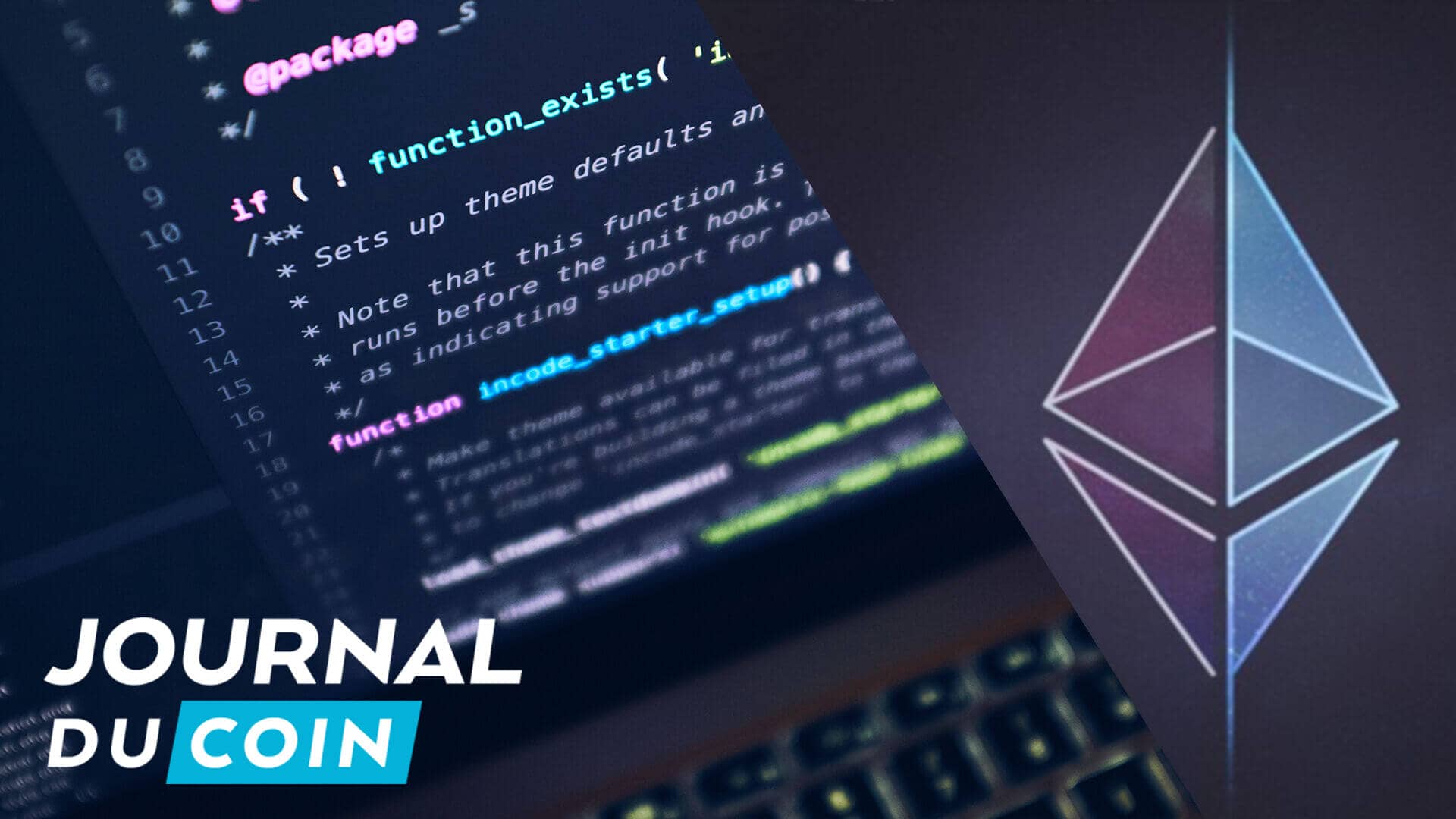On September 30, in cconclusion of a joint request for proposal (RPF), the Ethereum and Mina foundations announced the awarding of a $1.2 million contract to carry out a major strategic development. The Crypto3 team from the “=Nil;” foundation is thus responsible for making possible the implementation of Mina’s “Pickles Snarks” on the Ethereum virtual machine (EVM).
Such a deployment means that it will soon be possible to import everything that happens inside the Mina blockchain on the Ethereum network. Dapps, DeFi, computation, privacy, decentralization and more. A technical feat that will also allow Mina to keep its featherweight, while going beyond the limits of its native network.
This article is brought to you as part of an educational communication campaign, and supported by Mina.
A recursive standard to project crypto into the future
The Mina layer 1 blockchain technology is like many others consensus-based”proof of stake”. Its singularity lies in an extremely contained register, favoring mass adoption and maximum decentralization. To do this, the protocol uses a so-called “recursive” function which allows it to keep a fixed size. Thus, the Mina blockchain will never weigh more than 22 KB – the equivalent of two tweets – without ever sacrificing security or scalability.
In computer programming, recursive design refers to a type of evidence that inherently contains the correctness of the evidence that precedes it. At a lower cost, this feat makes it possible tocertify the integrity of the register over time without carrying the complete history. Before that, this condition imposed on all “proof of stake” networks an increasingly cumbersome and time-consuming validation infrastructure.
It is the Diffie-Hellman decision hypothesis known as the “discrete logarithm” which allows for the first time to consider a way out of this situation. The evidence “zk-Snarks” (zk = Zero Knowledge) used by Mina are inspired by this work. They offer a light and perfect representation of its state at the moment T. However, this recursive singularity makes the verification difficult and expensive on an Ethereum virtual machine (EVM) which was not intended for this.
Interoperability hitherto too cumbersome and too costly
This is because traditional bridges between protocols require data to be explicitly transferred from one single cluster to another. On the other hand, they also require the presence of a programmatic body responsible for establishing “confidence”.

These interoperability protocols act in three steps:
- Configure and impose the terms of the dialogue between the protocols
- Prove: The applicant provides proof of the operation he wants to export
- Verify: The recipient verifies the evidence and deploys it to their network
The first step is performed only once. A step heavy configuration which imposes the initial parameters on the “provers” as well as on the “verifiers”. This is the so-called “trust” stage. Once this phase is complete, the following steps can generally be repeated indefinitely by recycling the results.
A new tangy standard for an extremely light blockchain
For the Crypto3 team, the issue of viability lies in the abolition of this first step which makes any interoperability so complex and costly. To solve this, she will therefore seek to take advantage of the specificity of the latest evolution of zk-Snarks proposed by Mina, the “Pickles Snarks”. An improved version in many respects:
- A weight reduced from 753 bits to 255 bits
- 16 times faster Random Verification Function (VRF)
- A hashing speed multiplied by 8
- Storage needs on ledgers divided by 3
- But above all, an unprecedented capacity. These proofs are completely self-checked!
It is this feature that is of particular interest to developers sinceit eliminates the need for a trusted configuration. Its structure builds on Halo’s internal product argument, augmenting it with a ton of optimizations that would be indigestible to list here. Remember that this evidence is now considered “transparent”. Sort of, evidence exogenous to Ethereum that EVM can take their word for.
The blockchain revolution of bridge without trust configuration
Crypto3 is therefore responsible for taking advantage of the major technical innovations contained in this format. In fact, they alloweffectively alleviate the evidence verification cycle. The simplification of the procedures necessary for the interoperability of smart-contracts therefore looks promising. And yet…
The 2021 bullrun exponential gas fees make the cost targets of the initial approach totally unacceptable. To further work on the financial dimension, the team must push optimization to its climax. Crypto3 then explores the track of a “proof of validity” which will be accepted by Ethereum. Ancillary evidence akin to the “RedShift” approach applied to the Pickles Snark. In essence, it embeds part of the Pickles Snark according to a new nomenclature:
- Transparency management now accomplished according to the FRI (Fast Reed Solomon Interactive) knowledge retention model, based on hashing.
- A syntax refocused on the PLONK model for a drastic reduction in the circuits and costs inherent in taking into account the proofs that result from such a reworking.

The result is beyond their expectations. Gas costs are drastically reduced. But above all, a new so-called “auxiliary” proof format seems on the verge of enriching the Pickles Snark, and by extension the Mina protocol. A breakthrough that finally makes possible the deployment of the first zk-SNARK capable of “recursive composition without trust configuration” on the EVM. The “trustless” bridge, accompanied by its toolbox for our developer friends, is finally built.
A world of opportunities opens up between Mina and Ethereum
The demonstration conducted recently by the two companies brought its share of good news. For example, a simple browser is enough to connect to the clusters. Thus, anyone can very simply generate this auxiliary format of evidence and submit it to the EVM.
Do we not say trivially that it is by doing anything that we become anyone? No worries ! In this scenario, a user attempting to generate an empty and/or faulty proof of status will systematically receive an error message. Forfeiture is impossible because the digitized evidence will not correspond with the reality of the state of the Mina network.
This innovation therefore allows the Mina blockchain, like other layer 1s before it, to be verifiable on Ethereum. By using the new bridge, DApps will be able to access Snapps of the Mina ecosystem and vice versa.

“Ultimately, verifying the Mina blockchain on Ethereum will allow developers to mine the benefits of using recursive SNARKs on Ethereum when creating DApps. This is how digital auditability and privacy will become the norm.”
Evan Shapiro, CEO of the Mina Foundation
You can also consider the bridge the Crypto3 team built as an additional layer of security for Ethereum. Indeed, one of the major challenges of this interoperability is to provide Ethereum with an effective means of preserving confidentiality within its smart-contracts. The information contained in the Pickles-Snarks are absolutely indisputable, but will never be disclosed. A feature that will now benefit the entire Ethereum ecosystem, and far beyond.
The first deployment on the EVM is expected at the end of January.
